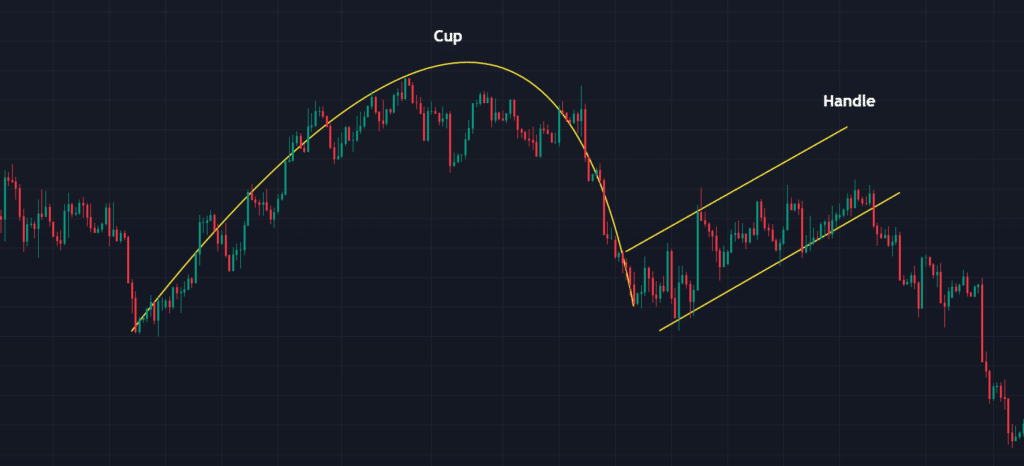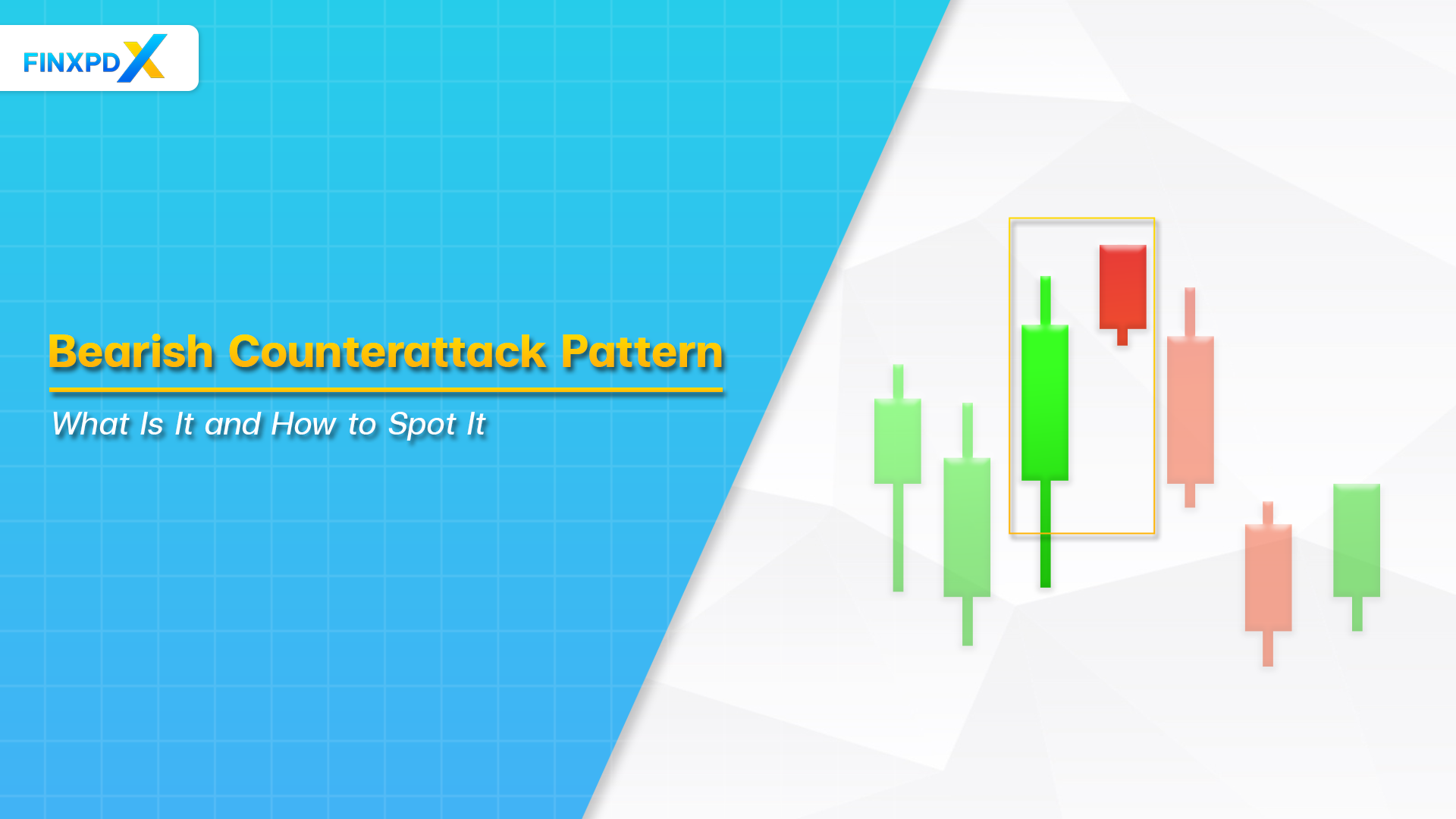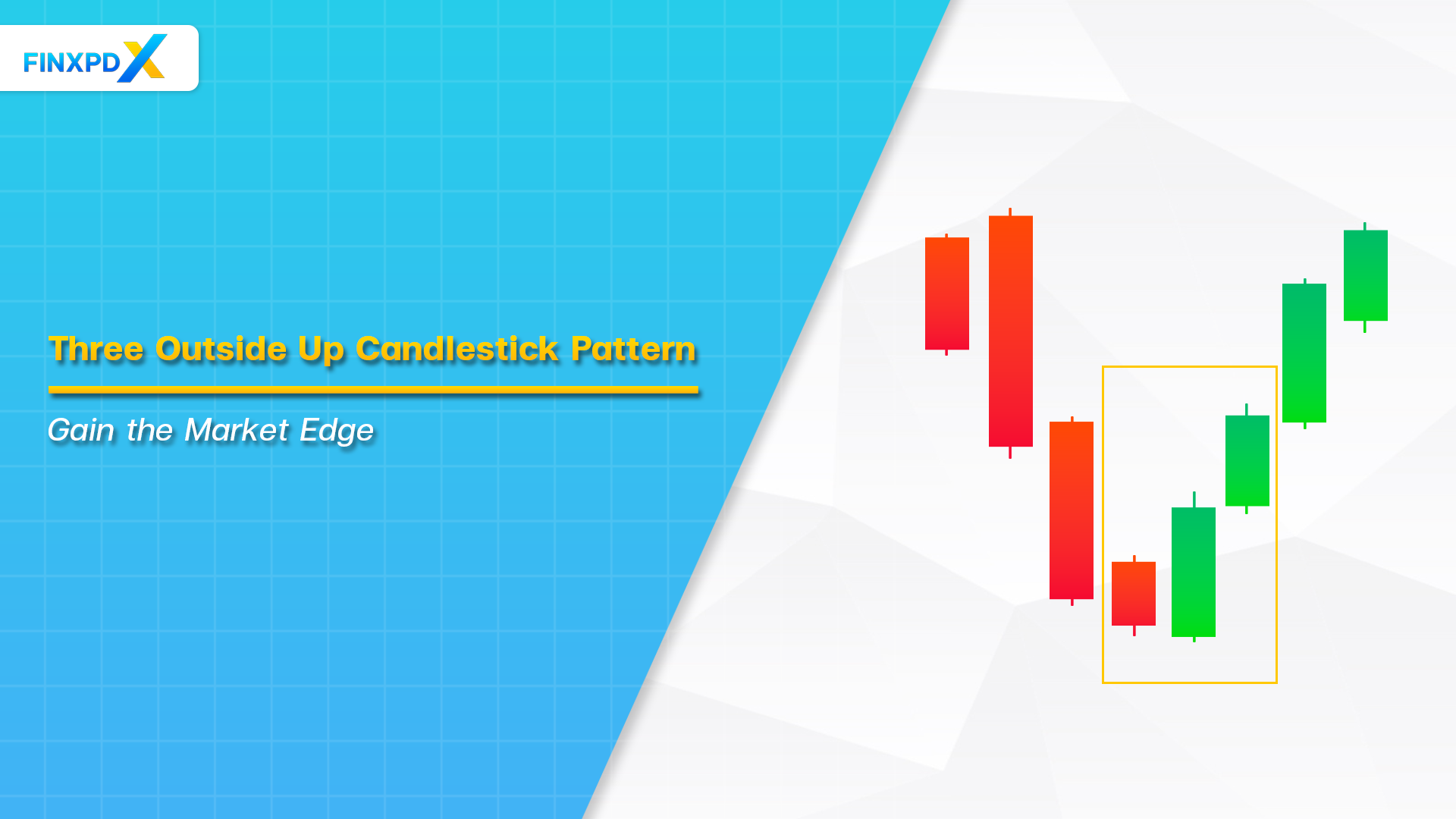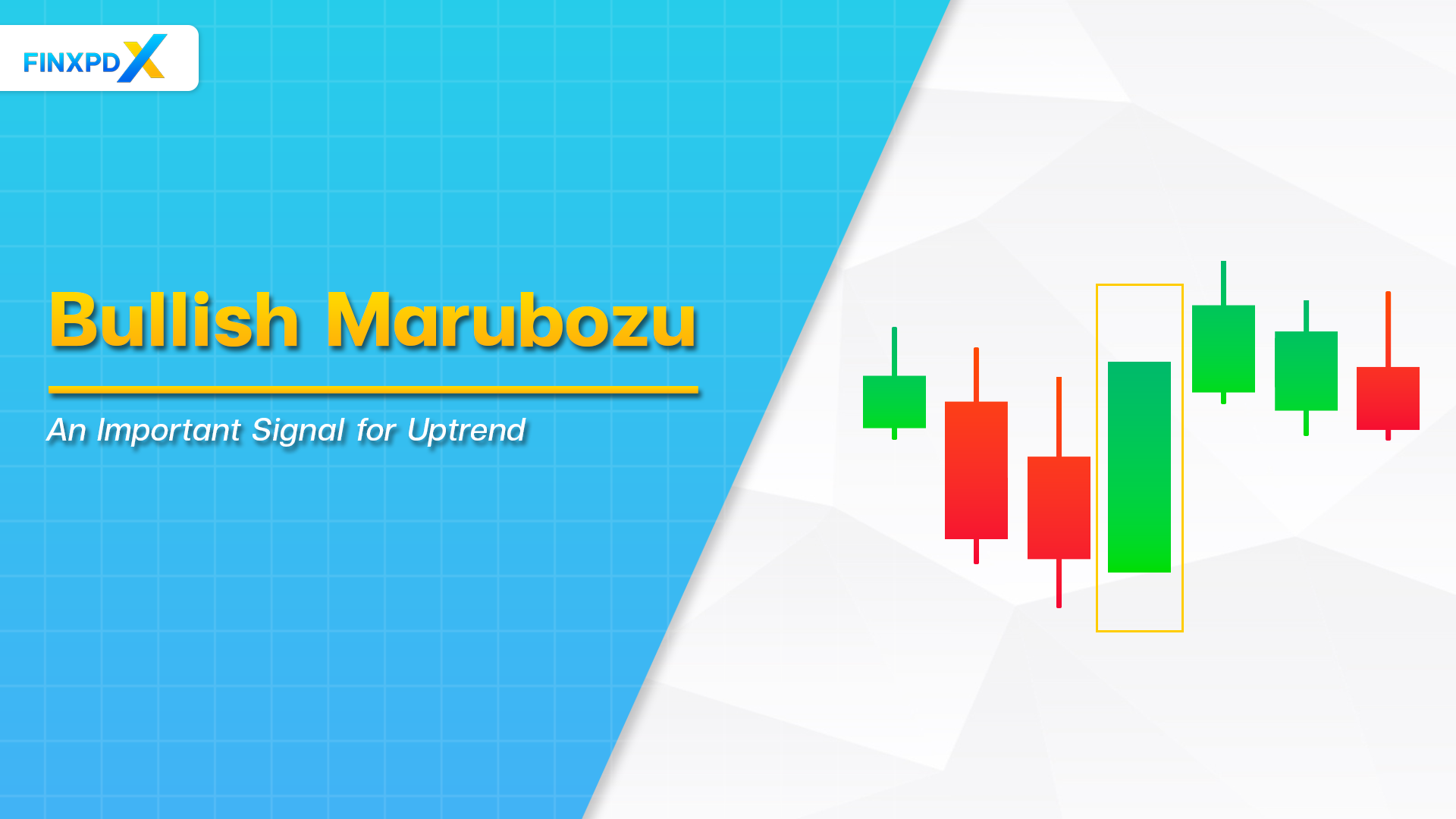The cup and handle pattern is a fascinating topic in financial markets. It is a widely recognized chart formation that signals a bullish trend in the stock market. It mimics the shape of a teacup. Therefore, understanding the cup handle pattern can unlock profitable opportunities for traders and investors.
This guide aims to provide details into what it is, how it forms, and its various benefits and limitations.
What Is a Cup and Handle Pattern?

The cup and handle pattern are vital tools in technical analysis, revered for its ability to predict a bullish market phase. Unlike other chart formations, it gives traders an upper hand by indicating not just the price direction but also providing insights into the strength and duration of a forthcoming uptrend.
In the simplest terms, this pattern is distinguished by two main parts:
- The cup pattern is rounded in the chart, indicating that the asset is undergoing a consolidation or a downtrend.
- The handle is a shorter, sideways, or downward consolidation phase that appears after the cup.
Key Takeaways
- The cup and handle pattern is a bullish chart pattern recognized by its cup-like shape followed by a smaller consolidation handle, often indicating a potential price uptrend.
- The cup and handle pattern serves as a valuable addition to a trader’s technical analysis toolkit, contributing to a more informed and strategic approach to trading.
- The reversed cup and handle pattern is a bearish chart pattern characterized by an inverted cup shape followed by a smaller upward drift, often indicating a potential price downtrend.
- Key benefits of the cup and handle pattern include giving clear entry and exit points, being visually distinct, historically reliable, and facilitating risk management.
How Does the Cup and Handle Pattern Form?
The formation of the cup with handle pattern is gradually impacted by investor sentiment and market trends. Initially, the stock price falls, creating the left side of the cup. This decline is often due to profit-taking or investor uncertainty. The stock then hits a low point, forming the cup’s bottom. During this stage, trading volume is usually low as investors take a step back.
After the bottom is established, the stock price starts to recover, creating the right side of the cup. This rise often reflects renewed investor confidence. Following the cup, the handle appears. It’s a shorter, downward, or sideways trend showing stock price consolidation.
How to Trade Using a Cup and Handle Pattern
Trading with the cup and handle pattern involves identifying a distinctive “U” shape followed by a smaller downward drift, resembling a cup with a handle. You can start by locating a security that has formed this pattern on its price chart. Once the handle begins to form, wait for the price to break above the handle’s resistance level. This breakout is your signal to enter the trade, typically buying the security. Place a stop-loss order slightly below the handle to manage risk. For a target price, measure the distance from the bottom of the cup to the breakout point and add this to the breakout level. This method can help traders capitalize on potential upward momentum following the pattern.
⚠️Tip: Pay close attention to trading volume during the breakout. A substantial increase in volume can strengthen the validity of the pattern.
What Is an Inverted Cup and Handle Pattern?

An inverted cup and handle pattern is a bearish chart pattern that mirrors the original pattern, which is typically bullish. The inverted version consists of an upside-down “U” shape as the cup, followed by a brief upward drift as the handle. This pattern suggests a potential downward price movement. As the traditional cup and handle indicate an impending price increase after a consolidation phase, the inverted version signals a possible decline after a brief rally. Traders should also use this pattern to identify opportunities to sell or short a security, anticipating a further price drop.
5 Benefits of the Cup and Handle Pattern
When it comes to trading strategies, this pattern shines for these exceptional reasons:
1. Clear Entry and Exit Points
The pattern highlights entry points near the handle’s upper trendline. Exit points arise when specific criteria are met, aiding traders in profit realization and risk management. The pattern also suggests optimal stop-loss orders and take-profit levels.
2. Inherent Bullish Bias
It is inherently bullish, signaling the potential for an uptrend. This bias can instill confidence in traders finding opportunities to buy.
3. Visual Clarity
It has a striking appearance, making it easy to spot on price charts and accessible to traders of all levels of experience.
4. Reliability
It is backed by a history of reliability in predicting price movements. This pattern is a trusted tool for technical analysis.
5. Effective Risk Management
It has effective risk management. By defining stop-loss levels clearly, the pattern empowers traders to manage risk effectively, reducing the potential for significant losses.
5 Limitations of the Cup and Handle Pattern
While this pattern offers valuable insights, it’s essential to be aware of its limitations:
1. Potential for False Signals
Each cup pattern and handle pattern doesn’t guarantee a bullish breakout. Therefore, traders must exercise caution, considering that false signals can lead to losses. Combining this pattern with other technical analysis tools for confirmation is essential.
2. Consideration of Time Frame
It’s important to note that this pattern often takes time to form, spanning several weeks or months. Traders with shorter investment horizons may find it less suitable for their strategies.
3. Volume Alone Isn’t Definitive
While an increase in trading volume is often associated with a valid breakout, it’s crucial to remember that volume alone isn’t definitive. False breakouts with high volume can occur, necessitating a comprehensive analysis of other factors alongside volume.
4. Impact of Market Sentiment
It doesn’t account for sudden shifts in market sentiment or external events that can impact asset prices. Traders should stay informed about broader market dynamics.
5. Varied Effectiveness in Different Market Conditions
It’s important to recognize that the effectiveness of the cup and handle pattern can vary based on market conditions. In strongly trending markets, it may be less reliable as a predictive tool.
Conclusion
In technical analysis, the cup and handle pattern is a powerful tool for traders seeking bullish opportunities. This pattern is characterized by its distinctive cup-like shape followed by a handle. It provides traders with clear entry and exit points, offering the potential for profitable trades. On the other hand, understanding the inverted version is equally crucial, as it identifies bearish trends and potential price declines. This pattern allows traders to strategize effectively for downward movements.
However, it’s important to remember that while the pattern and its inverted counterpart have shown historical reliability, they are not infallible. Traders must be aware of their limitations, such as the potential for false signals and the influence of market sentiment, to ensure a more holistic trading strategy.
FAQs
It is a bullish chart pattern with a cup like shape followed by a smaller consolidation handle, indicating a potential uptrend.
Yes, it is typically a bullish indicator, signalling the potential for a price uptrend.
It indicates a potential uptrend in the price of a security. It suggests that after a period of consolidation, the price is likely to break out above the handle’s resistance level.
After the pattern forms, the price typically breaks out above the handle’s resistance level. This breakout provides a clear entry point for traders looking to capitalize on the expected uptrend.
Benefits include clear entry and exit points, inherent bullish bias, visual clarity, historical reliability, risk management, and versatility across assets.
Related Articles:
- Forex Gods: Unveiling the Secrets of Top-Level Traders
- Forex Indicators: Guide for New Traders
- Forex Line Trading: A Path to Profitable Trades
- Shooting Star Candle: A Useful Indicator in Trading Charts
Read more: Forex








